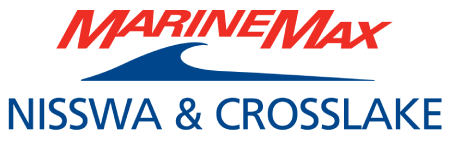Navigating Your Boat
 Taking your boat out on the water can be relaxing, thrilling, or even profitable, but the further you get from shore and landmarks, the harder it is to navigate. We here at Nisswa Marine want to help you stay safe and where you want to be, so we’ve put together a few tips for navigating on your boat, below. To learn more, or to see the boats we have for sale, contact our store in Nisswa, Minnesota, today!
Taking your boat out on the water can be relaxing, thrilling, or even profitable, but the further you get from shore and landmarks, the harder it is to navigate. We here at Nisswa Marine want to help you stay safe and where you want to be, so we’ve put together a few tips for navigating on your boat, below. To learn more, or to see the boats we have for sale, contact our store in Nisswa, Minnesota, today!
Navigational Measurements
For purposes of maine navigation, it’s important to know the basic units of measurement. Marine navigation tends to be measured in nautical miles and knots. One nautical mile is defined as 6,076 feet or 1,852 meters long. That happens to be 1/60 of a degree of latitude. A knot is a measurement of speed that equals 1 nautical mile per hour, or roughly 1.15 statute miles per hour.
Navigational Tools
First, make sure you leave the docks properly equipped. Before modern technology, navigators tended to rely on paper charts and maps, a compass, parallel rules, a stopwatch or hourglass, and dividers.
Nowadays, we rely heavily on a GPS, or global positioning system, which allows us to track our location in real-time thanks to various satellites in orbit. While this technology is increasingly precise and reliable, we recommend familiarizing yourself with the older tools in case your GPS isn’t working for whatever reason.
Dead Reckoning
Dead reckoning was the primary means of navigation for seafaring vessels using the older tools. It requires the navigator to establish a “fix,” or initial position, using external reference points. From there they can determine a vessel’s predicted course based on speed and direction, though it can’t take into account winds, tides, or currents. Try to combine this method of charting with a GPS for optimal results.
Bearings
Unless you’re going in a straight line, you’ll want to use bearings to help plan your route. These are interstitial destinations that help you plot a course around obstacles like land or shallows. Start with your current or starting position and your destination, then use straight lines to get around any obstacles between them. Bearings rely heavily on magnetic compasses and a parallel rule, which is two rulers attached on a swiveling arm, so you can draw these legs and note the distance between them. You’ll also need a map that shows the number of inches or centimeters in a mile.
Preventing Collisions
If you’re going to be navigating in a vast body of water, use the International Maritime Organization’s “COLREGS” (or “Collision Regulations”), also called the International Regulations for Preventing Collisions At Sea. While these only strictly apply to sea-faring and oceanic travel, they can be a good reference for bodies of water as massive as Lake Superior. Essentially, all sailors and boat operators must remain vigilant and aware of each other via verbal and audible communication and with radar and other detection technologies. The rules provide specifics on avoiding collisions and how to react if you might not be able to, so read up on these before heading out.
For more information, or if you just want to see our boat selection, contact us at Nisswa Marine. We proudly serve the people of Minneapolis and St. Cloud, Minnesota—let us serve you today!
